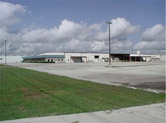| COVER STORY, AUGUST 2005
CITIES ON THE GROW
Economic development flourishes throughout the state of Texas.
Dan Marcec
Cities throughout Texas are seeing excellent growth in all commercial real estate sectors due to many factors. With large corporations moving to various submarkets within the state coupled with local residential booms, Texas has a lot to offer prospective developers. Texas Real Estate Business spoke with officials in New Braunfels, McKinney and Houston, Texas, to gauge growth trends in these markets. These three cities are growing in all sectors, and each shared its plans for future economic development.
New Braunfels
Situated along Interstate 35 between the two major metropolitan areas of Austin and San Antonio, Texas, New Braunfels is in a prominent position to expand its economic development. For example, the last 2 years have yielded more leads and prospects in the commercial real estate industry than the previous 10 years combined. One of the projects that has made New Braunfels most visible to these developers is The Home Depot Supply’s customer call center, an 80,000-square-foot office building that was completed in late July.
“A unique aspect this project has brought to the area goes beyond the 350-plus jobs that its development created,” explains Michael Meek, president of the Greater New Braunfels Chamber of Commerce, Inc. “Our community receives the sales tax on any sales they make that ship in Texas; since sales tax is our city’s largest revenue generator, this project has become a major economic advantage for New Braunfels.”
 |
In New Braunfels, Texas, Ashley Furniture HomeStores has located its distribution center and corporate headquarters at the city’s largest industrial space.
|
|
Another large project has put the city on the map by creating ancillary growth as well. Ashley Furniture HomeStores recently located its distribution center and corporate headquarters at a 213,000-square-foot facility in New Braunfels, effectively filling the city’s largest industrial space and creating upwards of 425 jobs.
In addition, the city’s airport submarket also is booming. The Central Texas Technology Center, a city-owned development that is operated by San Antonio Community College, opened its first phase, a 25,000-square-foot building, last year. The project is a post-secondary technical education facility, and more than 1,200 students enrolled in the first year of its existence. Silver State Helicopters also recently chose the New Braunfels airport for its Texas operations. This project includes a helicopter training school, which will educate more than 450 people a year in the aviation field, and it will create roughly 150 jobs; furthermore, Silver State has plans for a $15 million expansion. Due to the city’s strategic location, more corporate traffic has been utilizing the airport, and these developments have helped make the city highly visible to companies that now know there is trained and skilled labor available in the area.
“These types of projects make us very visible to corporate site selectors and other companies,” says Meek. “When these prospective companies see other businesses selecting New Braunfels and opening successful ventures here, they feel more comfortable because they are not pioneers; as a result, we are seeing a lot of activity.”
In 2002, the city hired a strategy economic development team, which wrote a three-pronged strategic plan that New Braunfels has followed closely.
 |
In July, The Home Depot Supply completed its customer call center, an 80,000-square-foot office building located in New Braunfels, Texas.
|
|
To improve the city in the mid- to long-term, New Braunfels first wanted to provide post-secondary education for its community, an endeavor in which it already has been successful. Secondly, New Braunfels wanted to improve year-round tourism in order to import wealth, and so it ventured upon improving the town civic center to target the group meeting business. With that facility nearing completion within the next couple years, Meek feels like his chamber has put a “check mark” next to that goal as well. Finally, the plan sought to attract higher-than-average wage corporations. With the addition of The Home Depot Supply call center and Ashley Furniture HomeStores’ corporate headquarters, New Braunfels is well on its way to achieving its development objectives.
“We’ve never really been in the population game, and we’ve always had the philosophy that we want to aim more toward a positive per capita income,” Meek says. “We feel like the more money we can create within the community while importing new wealth, the higher the quality of life will be for our citizens.”
On top of the new developments, New Braunfels has more than $20 million of street and drainage projects underway, the city is in the process of hiring more policemen and more firemen, and city staff members are better compensated than they used to be. Overall, this added wealth and development growth is benefiting the city in all sectors.
McKinney
The city of McKinney, Texas, located north of Dallas in Collin County, is just passing the 100,000 population mark, thus finding itself in a tremendous growth phase. Developments in all sectors are coming along at the current time. In the office market, three projects — a 60,000-square-foot, a 30,000-square-foot and a 10,000-square-foot, respectively — all are in the works. Specifically in the medical office field, a 60,000-square foot project and a 34,000-square-foot development are under construction, and an additional 30,000-square-foot unit will be announced in the near future. Furthermore, a 200,000-square-foot manufacturing facility is being built as well.
“The most exciting endeavor we have in McKinney is our Gateway project, which actually will serve as the gateway into the city from the south,” says Jim Young, director of business development for McKinney Economic Development Corporation (EDC). “We control 65 acres and have additional acreage under contract. On the site we are planning a 250-room, 10-story hotel next to a 275,000-square-foot convention center; the Collin County Community College has planned a 100,000-square-foot administration building adjacent to that; and the development also will feature more than 500,000 square feet of retail and residential space as well as more than 200,000 square feet of office space.”
The extensive growth in McKinney is apparent by the projects that are underway, and the McKinney EDC wants to concentrate on the industry base that already is in place. In the airport sector, aeronautics aviation is a major focus, as the city has a 7,000-foot runway there; in addition, several businesses have relocated to that area, so the airport submarket continues to expand.
“We’re not actively seeking extensive development or population growth,” states Young. “Our mission is to create or attract high-paying jobs and to enhance the commercial tax base.”
McKinney’s growth is attracting developers, retailers and tenants. The area is very affordable, as median house prices still hover around $180,000, and the government is very pro-business, according to Young, who states that the EDC is flexible and easy to work with. In light of the recent commercial real estate activity and the growth effected from it, McKinney continues forward optimistically.
Houston
 |
Last year, Chevron/Texaco purchased 1500 Louisiana, a 1.16 million-square-foot building in Downtown Houston. Photo credit: John Huff.
|
|
As the fourth largest city in the United States, Houston is a prominent prospect for a developer. Currently, the population is growing by approximately 50,000 people a year, which in addition to turning heads suggests a market in need of new development. Fortunately for the city of Houston, in 2004, both the office and industrial markets saw significant net absorption. Chevron/Texaco purchased 1500 Louisiana, a 1.16 million-square-foot office property in downtown Houston; in addition, Citgo Petroleum moved into 240,000 square feet of Class A office space at 1293 Eldridge Parkway in the energy corridor.
In the industrial sector, Wal-Mart Corporation built a 2 million-square-foot industrial distribution facility in southeast Houston, and immediately after beginning Phase I of its construction it announced another 2 million square feet that will comprise Phase II of the project. Prior to this project, The Home Depot had built an 800,000-square-foot distribution facility as well. Both of these corporations have taken advantage of the Port of Houston, which they utilize to bring in containerized cargo.
“Each of these developments has helped attract companies to look at Houston as a possible inbound port destination, whereas in the past, many of these companies would look toward the East or West Coast,” says Dan Seal, vice president of the Economic Development Division at the Greater Houston Partnership. “People are recognizing where prominent corporations such as Wal-Mart and Home Depot are locating; as a result, other prospective companies are investigating the opportunities Houston has to offer as well.”
The Greater Houston Partnership provides a full array of typical economic development recruitment activities, distributing marketing materials both nationally and internationally touting the advantages of locating in Houston. In addition, the staff attends trade shows in a number of targeted industries such as the energy business, chemicals, information technology (including computer software and hardware), plastics, telecommunications, life sciences (including biotechnology) and advanced manufacturing. By working with area and national site consulting companies through a network of real estate brokers, accountants, bankers and moving companies, the organization effectively can provide information about the positive aspects developing in Houston can offer. In fact, 70 percent to 75 percent of development leads the Greater Houston Partnership receives are through these third-party sources.
“In general, we focus on developing projects that will create direct employment,” explains Seal. “For example, our retail markets and our housing markets are booming right now, which are indirect manifestations of the direct jobs in manufacturing, office or distribution that have been created out of the development in those sectors.”
The economic impact of the recent development has been extensive. According to Seal, three main factors drive Houston’s economy. First, the health of the United States’ gross domestic product has a great effect on the economic impact in Houston, and currently, the rest of the country is doing well, so as Seal notes, “[Houston’s] one for one.” Second, since the energy industry is so strong in the Houston area, energy prices play a key role in the local economy.
“Obviously it hurts at the pumps when the price for oil is $60-plus per barrel,” Seal says. “Yet historically, Houston is tied to the energy industry, so the higher energy prices mean higher profits for the city’s companies, effectively creating employment in that sector.”
Third, the dollar’s value against international currencies is a large influence on the Houston economy. The major foreign currencies tending to rise against the dollar over the past 3 years has been a positive for the local market, because exports are relatively less expensive overseas. This factor has led directly to growth in the manufacturing sector.
In terms of statistics, projects on which the Greater Houston Partnership has assisted had an annual economic impact (tracked through a regional impact modeling software) of $232.4 million for 2004. To provide a gauge of this impact, Seal notes that the Partnership only is involved with approximately one out of every 10 projects that comes on line in the city, as companies often make decisions to move to the area without needing assistance, for instance. Furthermore, the annual economic impact through June 30, 2005, almost has doubled the impact through all of 2004, currently standing at $424.8 million. In effect, Seal and the Greater Houston Partnership have an optimistic outlook that this growth trend will continue.
©2005 France Publications, Inc. Duplication
or reproduction of this article not permitted without authorization
from France Publications, Inc. For information on reprints of
this article contact Barbara
Sherer at (630) 554-6054.
|
